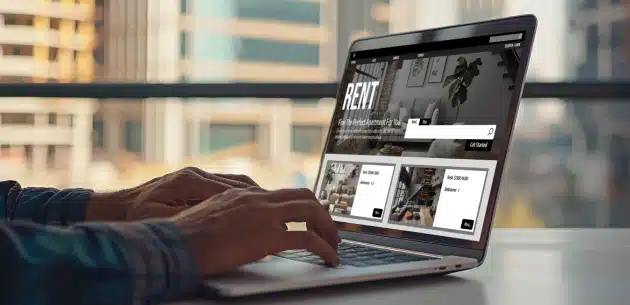
Dribbble is a product design platform where budding and skilled designers can learn product design, create and share their design portfolio with a community of designers, and get product design jobs. Dribbble is a social media platform, a product design school, and a freelance job site that seeks to connect design professionals to hiring managers and companies that need design expertise. Dribbble teaches an introductory product design course, and a design upskill course to ensure that hiring managers discover skilled designers when they visit Dribbble.
Dribbble has been around since 2009, and while it’s a playground for designers, it’s also a robust resource for discovering creative talent. Hence, small businesses can use Dribbble to source design expertise to hire full-time or outsource their projects.
How to Use Dribbble As a Small Business
First, you will create an account. Initially, Dribbble used to be an invite-only platform, but now anyone can create an account on Dribbble. Dribbble is not free to use, and you will have to pay monthly subscriptions. Besides paying to use the platform, Dribbble is pretty easy to use.
On the website, you will find a “Hire Designers” button at the top with a dropdown list of three items; Designer Search, List my Job Opening, and Post a Freelance Project. Dribbble Hiring has three types of paid access; Job Board, and Designer Search both cost $299 per month, or you can combine both and pay $499 per month. Job Board lets you post your design job listings, while Designer Search allows you to search for designers.
You can only post one job listing with a Job Board account, but you have unlimited edits to change the listing. Dribbble expects you to post a job listing, hire someone or not on Dribbble, and after a while, post another job listing — one at a time. Designer Search, on the other hand, gives you access to search through thousands of designers using optimized filters to search by locations, experience, specialization, budget, etc. You can also review designers’ portfolios to make your hiring decisions.
Hiring on Dribbble: once you’re ready to hire a designer for your project, your payment access will determine what you can access on Dribbble. If you pay for Job Board access, ensure to write your job listing clearly, define the project, choose the experience level you want to apply to the job, and state your budget. Look at the portfolio and reviews of designers who show interest to determine whether they are up to the task before you create a contract for the project. The same applies to Designer Search. Make a list of the designers you discover after using the relevant filters for your project and review their published work and portfolio before reaching out to them with details about your project.
According to the Dribbble website, over one million designers use the platform, and over 60,000 companies have hired design talent on Dribbble. So, we can say that it’s pretty popular among recruiters.
Dribbble Alternatives for Small Businesses: Dribbble VS Behance, and Others
Dribbble is not the only platform in this industry, one of the popular names to consider is Behance. Bechance is an Adobe-owned platform that launched in 2006. Unlike Dribbble, Behance is free to use. Anyone with a free Adobe account can create a Behance account. Behance is probably the best alternative because it offers similar services to Dribbble and caters to designers.
Behance is a social media platform with a community of creatives. Creatives can create and share their creative portfolio, and hiring managers and companies can discover creative talent. However, Behance doesn’t offer design education. Although the parent company, Adobe, is a household name for creatives, creatives who use Adobe products see Behance as the social media platform to share their work and get feedback from like-minded creatives. That probably eliminates the need for Behance to teach product design or any creative digital skill like Dribbble.
From the perspective of a small business looking to hire a designer, the Dribbble website is easier to understand than the Behance website. Behance doesn’t have a menu button for “hire designers’ or “post a job” on the website.
Hiring managers can open two types of accounts to discover design talent; Adobe Talent costs $399 monthly, and Adobe Talent Unlimited costs $1499 monthly. So, that makes Behance the more expensive alternative to Dribbble. Customer reviews on G2 justify the big difference in their pricing; Dribbble has a 4.1 rating, while Behance has a 4.5 rating.
Other Alternatives
Fiverr: Fiverr is a freelance marketplace where anyone can create a free account to sell/buy a service. It focuses more on the freelance relationship of a service provider vs buyer, and it doesn’t charge either party any fee to use it. Small businesses can use it instead of Dribbble to search for designers for quick design projects and save costs.
Upwork: Upwork is also a freelance marketplace that focuses on the freelance relationship between sellers and buyers. Upwork is generally more professional than Fiverr because its seller onboarding process is more thorough. It is also free for sellers (designers) and buyers (small businesses that need their services).
99designs: 99designs is a design-centric freelance marketplace that seeks to connect designers to people who need their services.
Outsourcing Design Debts VS Setting Up an In-House Design Department
As a small business, you are probably at the point where you are wondering whether outsourcing design debts is better than hiring an in-house designer. We will try to answer that for you here.
Let’s start by saying the cliche “it depends.” As a growing business, you should focus on establishing your brand as a problem solver. And at this point, you want to meet consumer needs. Aesthetics and professional branding are great, in fact, beautiful branding collateral can make your business look more professional and worthy of buyers’ coins. But design is costly and time-consuming. Hence, it might be better to outsource your design debts, such as logos, typography, and brand colors, to freelance designers. More reasons why you should use a platform that saves more money for hiring/discovering design talent while giving you good enough design deliverables.
Finally, you can’t use shortcut methods for your design debts forever. You should grow and reach a point where you hire an in-house designer.





